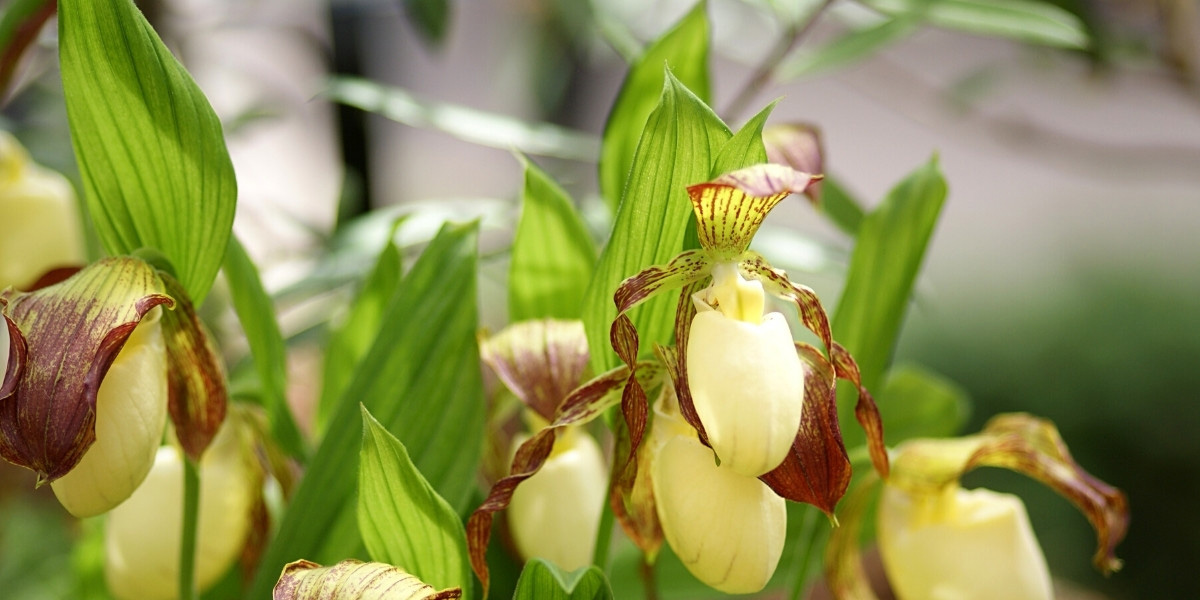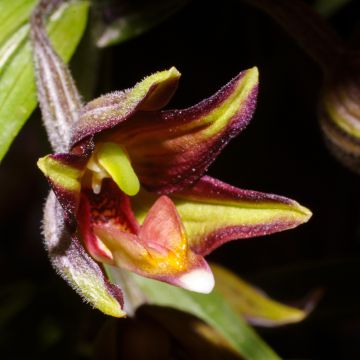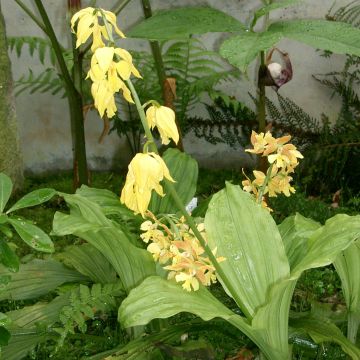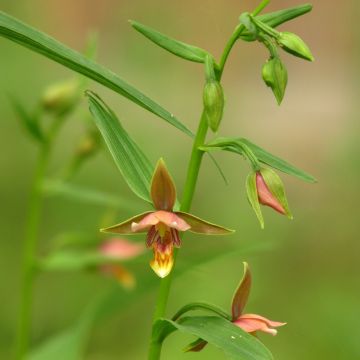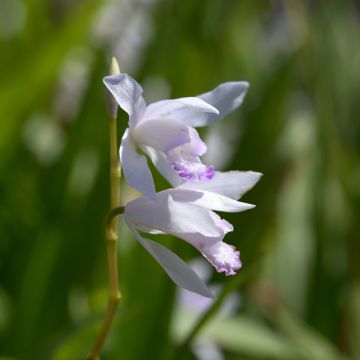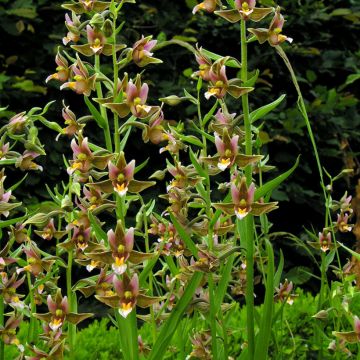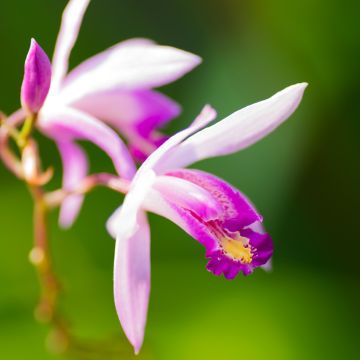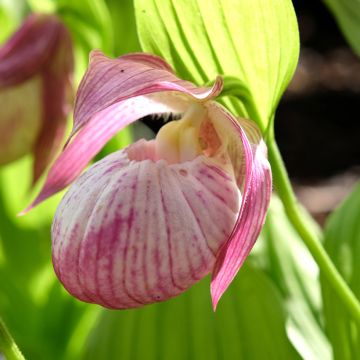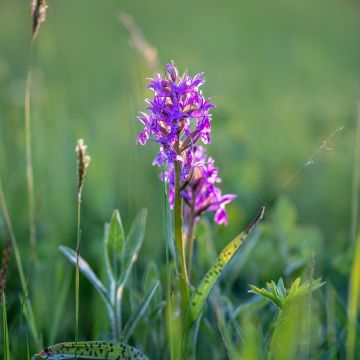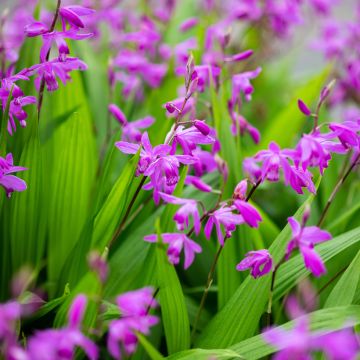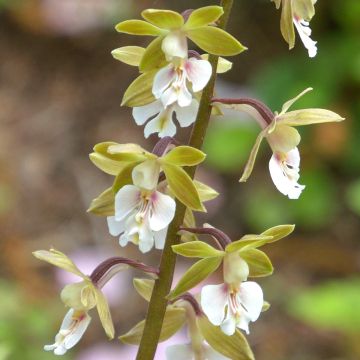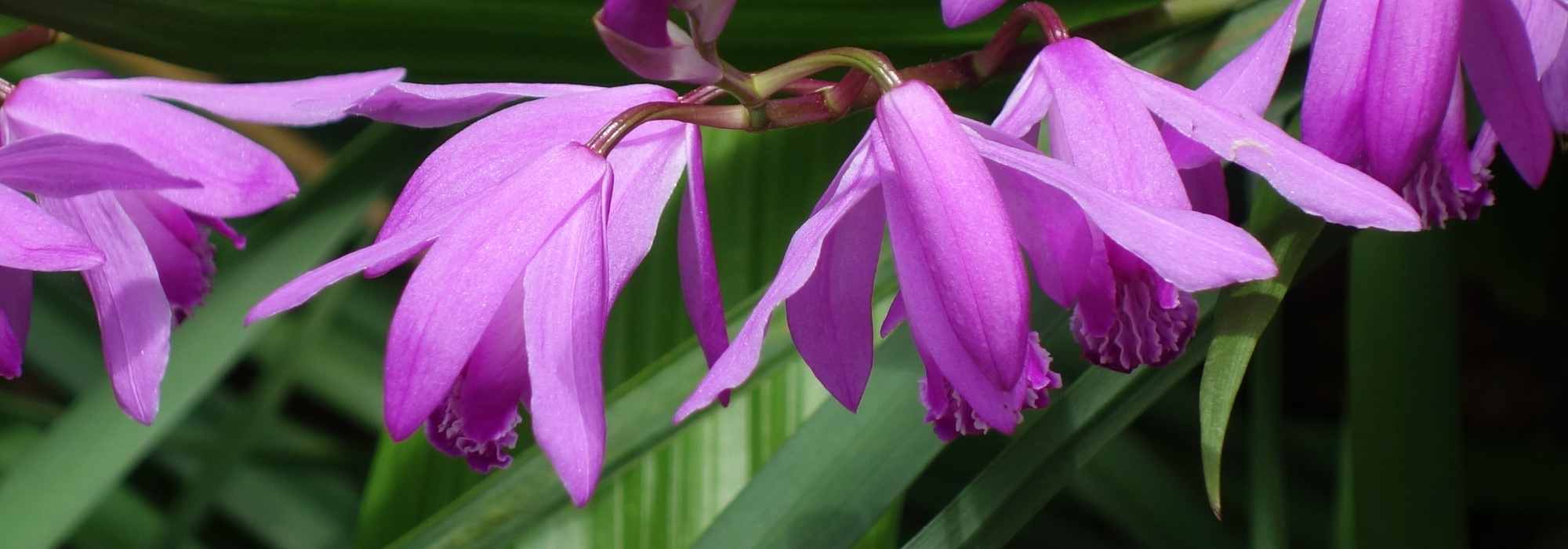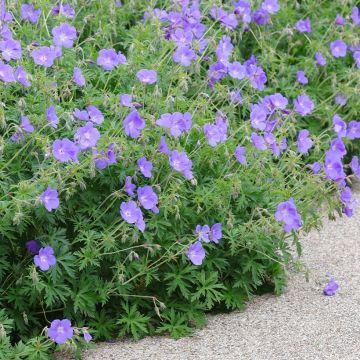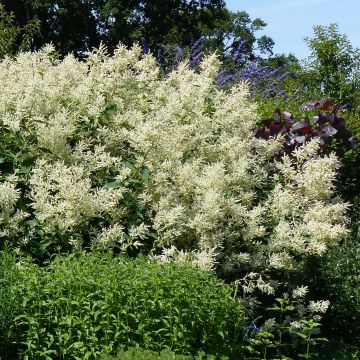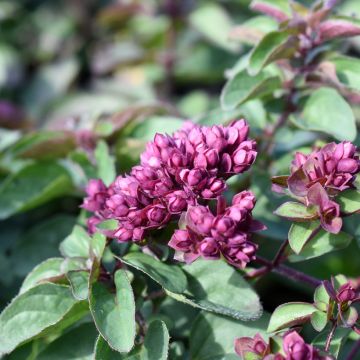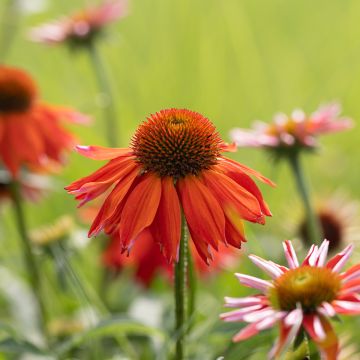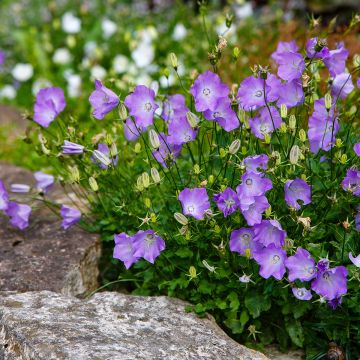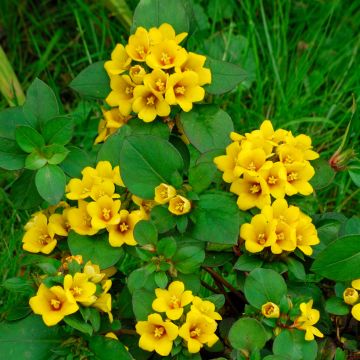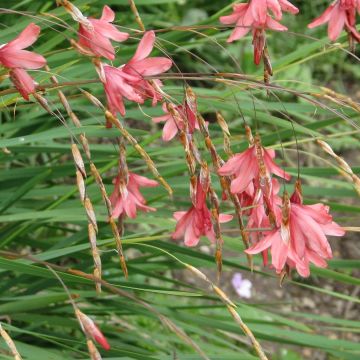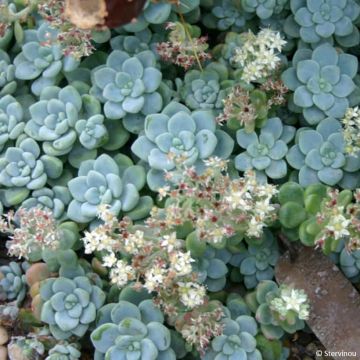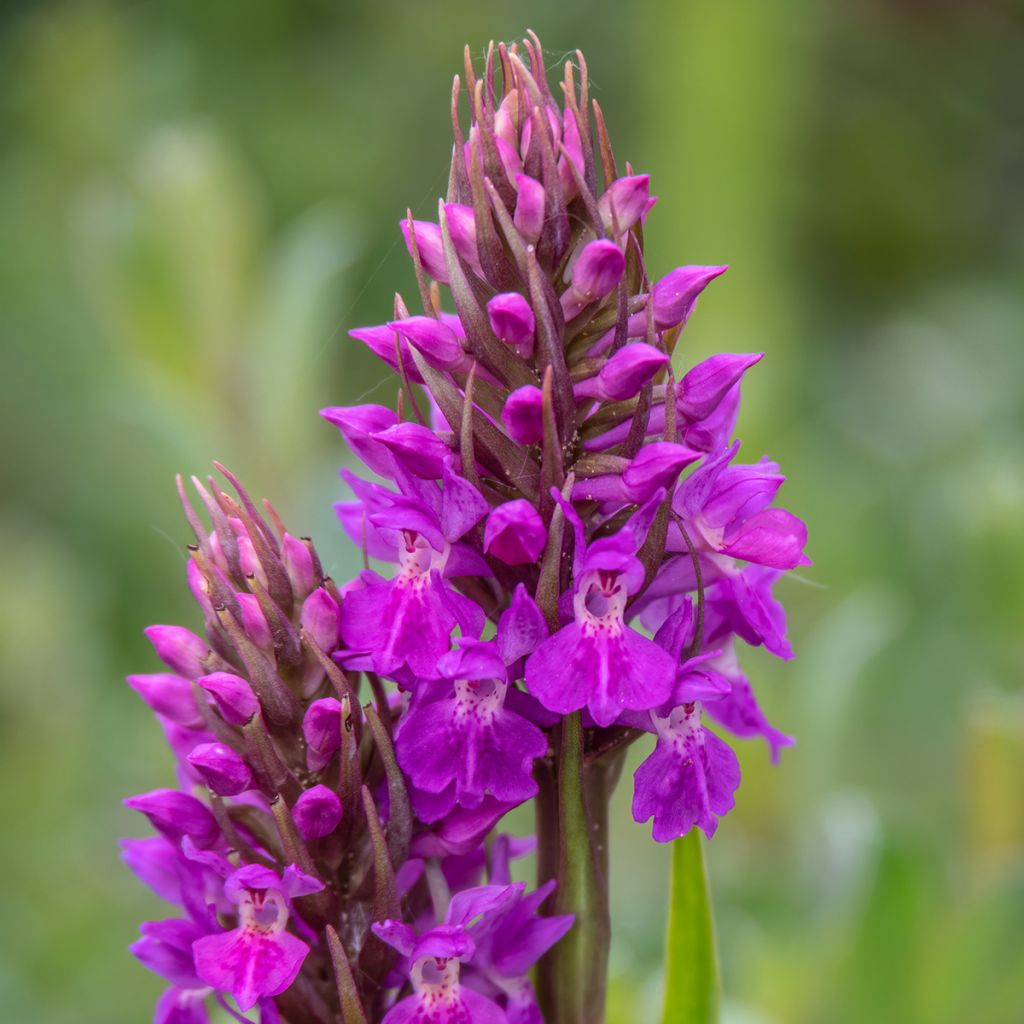

Dactylorhiza praetermissa - Marsh Orchid
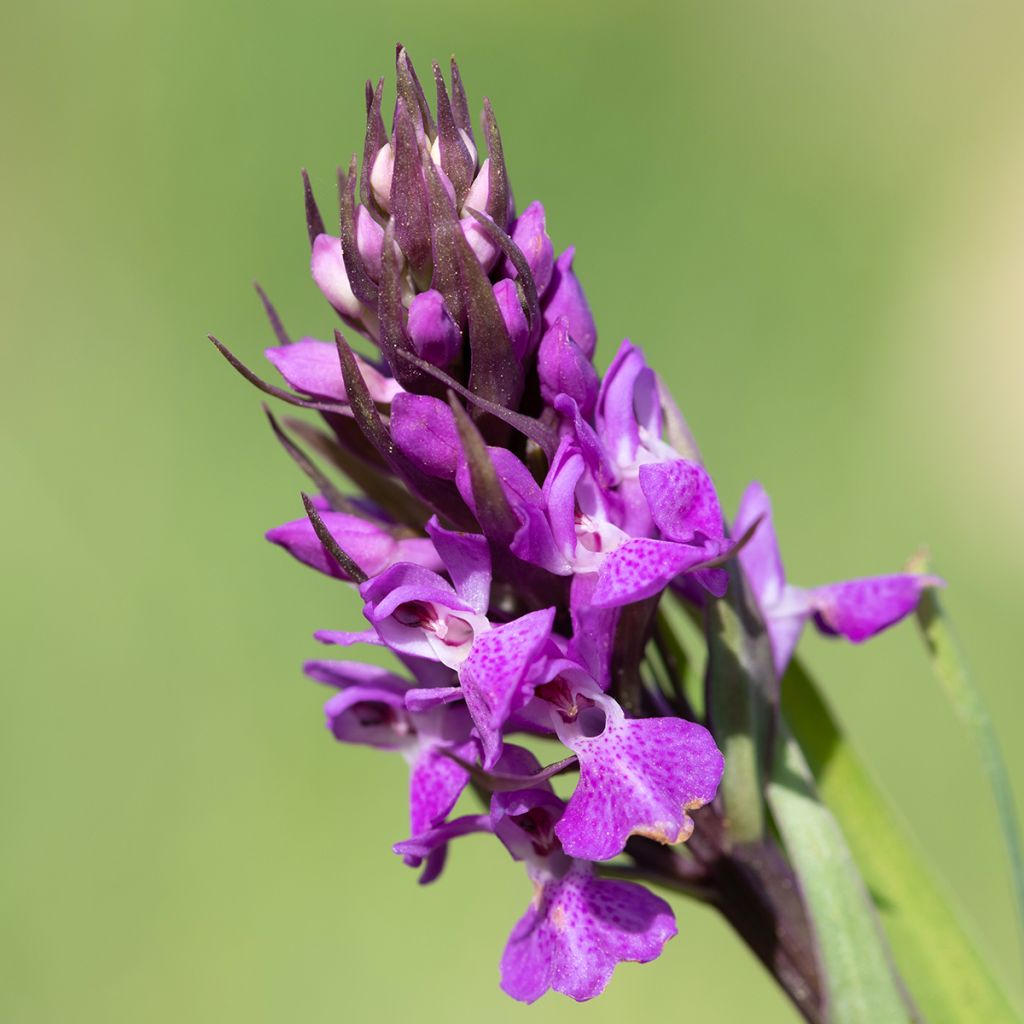

Dactylorhiza praetermissa - Marsh Orchid
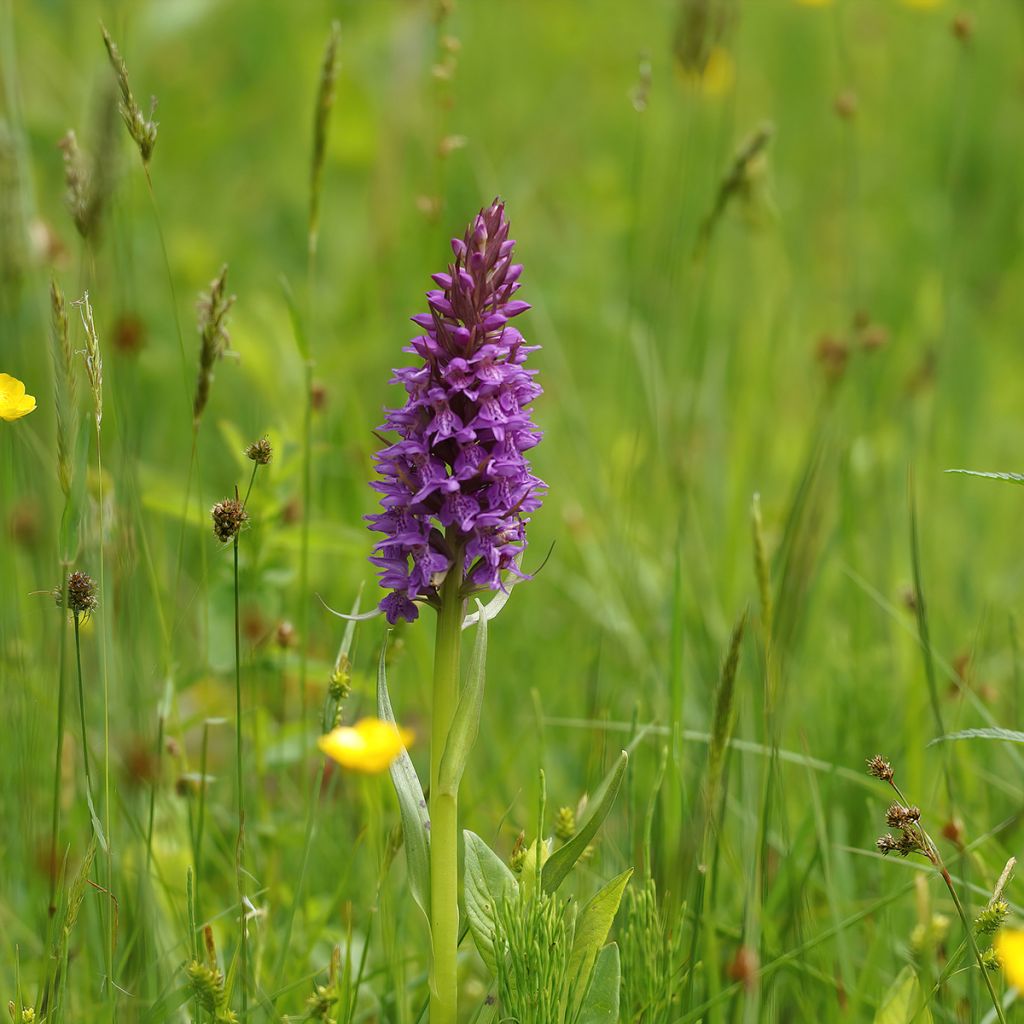

Dactylorhiza praetermissa - Marsh Orchid
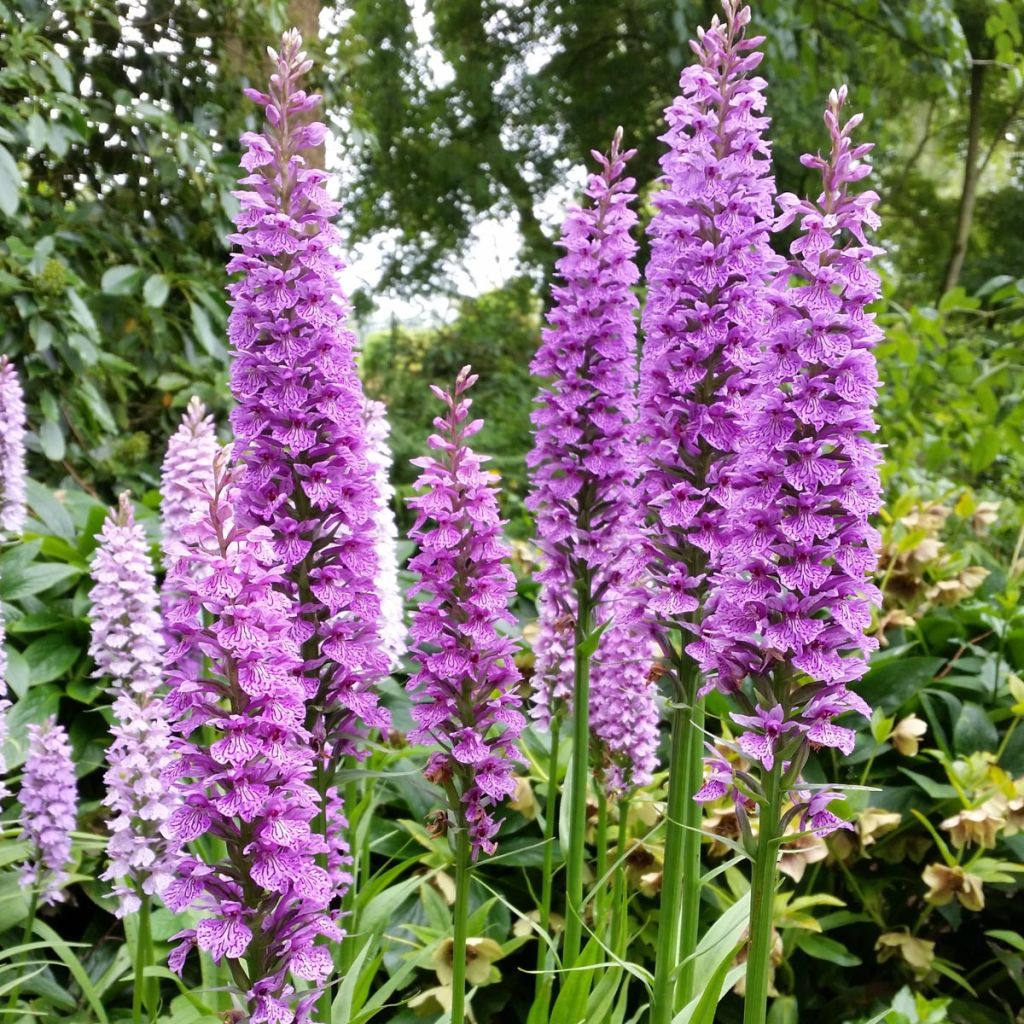

Dactylorhiza praetermissa - Marsh Orchid
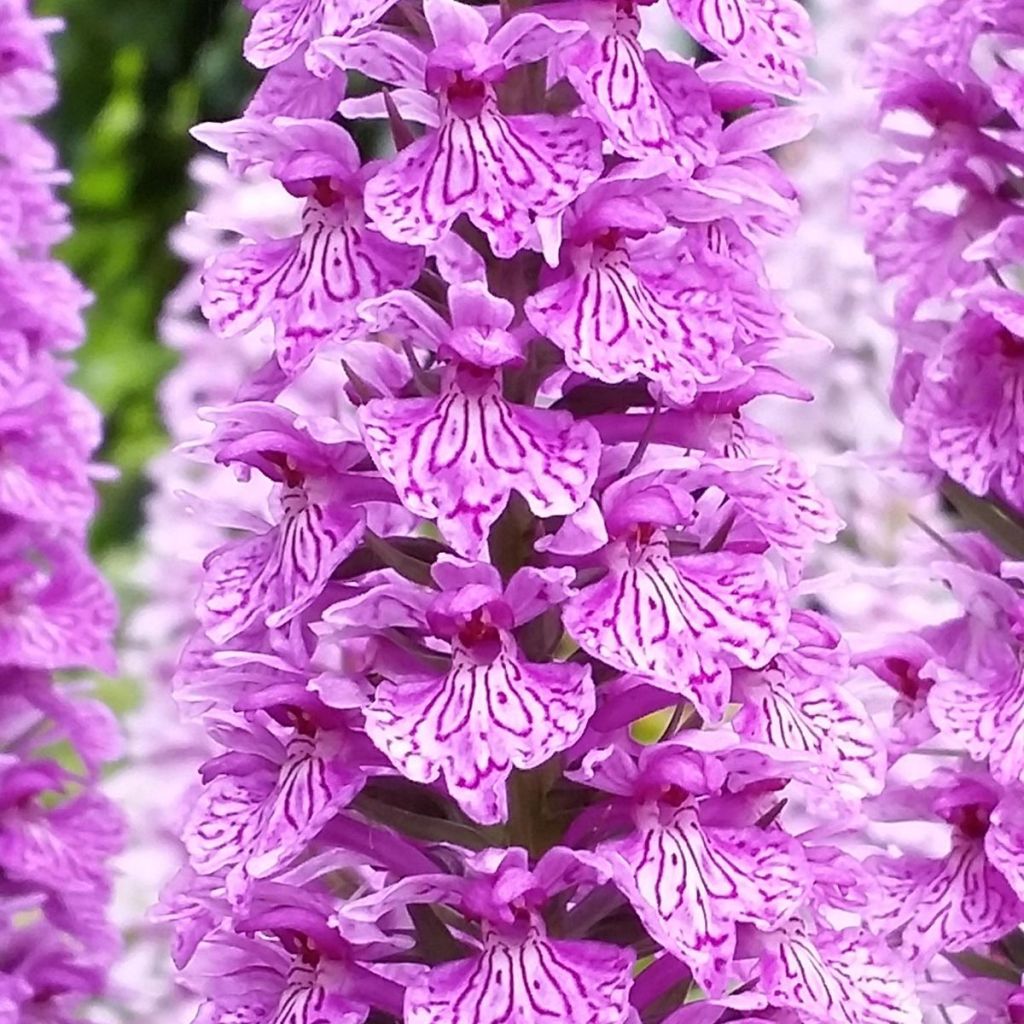

Dactylorhiza praetermissa - Marsh Orchid
Dactylorhiza praetermissa - Marsh Orchid
Dactylorhiza praetermissa
Southern Marsh Orchid
I planted this vine-plant last year (2015) and I was skeptical because it was very small and seemed fragile to me. It has bloomed beautifully this year and its leaves are also very pretty. I am very pleased to have succeeded in this planting and to have a vine-plant in the ground in my garden!
maryse, 22/09/2016
Special offer!
Receive a €20 voucher for any order over €90 (excluding delivery costs, credit notes, and plastic-free options)!
1- Add your favorite plants to your cart.
2- Once you have reached €90, confirm your order (you can even choose the delivery date!).
3- As soon as your order is shipped, you will receive an email containing your voucher code, valid for 3 months (90 days).
Your voucher is unique and can only be used once, for any order with a minimum value of €20, excluding delivery costs.
Can be combined with other current offers, non-divisible and non-refundable.
Home or relay delivery (depending on size and destination)
Schedule delivery date,
and select date in basket
This plant carries a 12 months recovery warranty
More information
We guarantee the quality of our plants for a full growing cycle, and will replace at our expense any plant that fails to recover under normal climatic and planting conditions.
Does this plant fit my garden?
Set up your Plantfit profile →
Description
Dactylorhiza praetermissa, the Neglected Orchid or Forgotten Orchid, is a robust and very hardy perennial. The fairly dense spikes of small pale pink to reddish-purple flowers stand out well against the stem and brown bracts. It is a beautiful native of Northern Europe, naturally occurring up to Northern France but rare. It thrives in the partial shade of damp meadows, the edge of water points, and dune slacks in cool climates.
Dactylorhiza praetermissa belongs to the Orchidaceae family. It is a terrestrial herbaceous orchid with a storage organ called a tuber, but it has a curious digitate shape (dactylo= finger, rhiza= root). This deciduous species forms, from spring onwards, a clump of dark green foliage marbled with black spots, composed of large leaves resembling those of lilies of the valley, ovate and lanceolate, with parallel veins. In June-July, sturdy, solid, reddish-brown stems appear, reaching 40cm (16in) in height and bearing fairly densely filled lovely small flowers, with petals ranging from pink to reddish-purple, on which pink-purple dots and curved lines are drawn. The pink of the flowers goes well with the purple bracts that sheathe them. The foliage yellows and disappears quite early in the season, sometimes as early as the end of August. The plant then goes into dormancy until spring. This orchid is not always faithful year after year, but that does not mean the plant is dead. This is largely due to climatic conditions. As can be observed in the case of mushrooms, there are years with orchids, and years without... These are beautiful whimsical plants that the gardener must patiently watch for.
Terrestrial orchids are considered pioneer plants, quickly establishing themselves in the most inhospitable areas, abandoned by other plants. Dactylorhiza praetermissa likes moist to wet soils, rich in humus, and can even tolerate occasional immersion up to 5cm (2in) of water. It is a plant that does not like to be disturbed. Take a tour of your garden to determine where it will thrive. In nature, it almost grows with its feet in the water, so it can be planted at the edge of a pond in the company of Astilbes, Rodgersias, ferns, or Aruncus dioicus, for example.
Wild orchids are endangered, and many of them are protected. Our plants do not come from uprooting in nature, but from dividing plants in cultivation. Obviously, this takes time and therefore increases their price, but they are robust and perfectly adapted to open ground. Quantities are always very limited!
Our Dactylorhizas are sold in 11cm (4in) pots so that they can bloom from the first year of planting.
Dactylorhiza praetermissa - Marsh Orchid in pictures
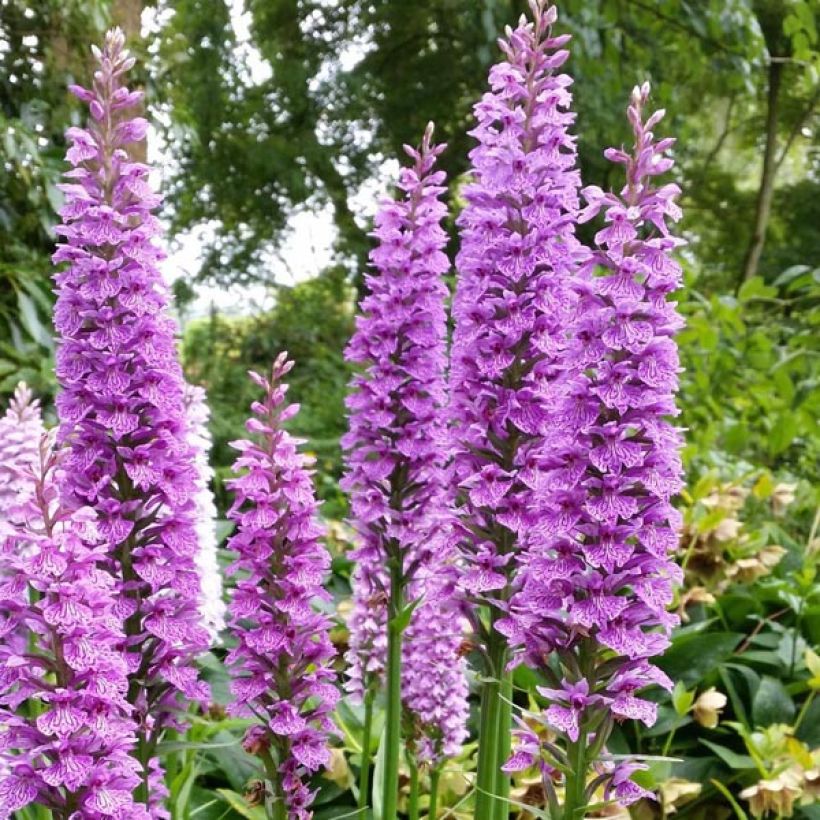

Flowering
Foliage
Plant habit
Botanical data
Dactylorhiza
praetermissa
Orchidaceae
Southern Marsh Orchid
Northern Europe
Other Garden Orchids
View all →Planting and care
Dactylorhiza praetermissa does not like to be disturbed. For this reason, it should be planted during its dormancy period, in autumn or early spring, before the start of vegetation. Install it in clayey, rich, loose soil, as it requires freshness and humidity. Marshy soils, not too chalky, that are both rich and deep are preferred. It adapts to full light as well as partial shade.
Planting period
Intended location
Care
Planting & care advice
-
, onOrder confirmed
Reply from on Promesse de fleurs
Similar products
Haven't found what you were looking for?
Hardiness is the lowest winter temperature a plant can endure without suffering serious damage or even dying. However, hardiness is affected by location (a sheltered area, such as a patio), protection (winter cover) and soil type (hardiness is improved by well-drained soil).

Photo Sharing Terms & Conditions
In order to encourage gardeners to interact and share their experiences, Promesse de fleurs offers various media enabling content to be uploaded onto its Site - in particular via the ‘Photo sharing’ module.
The User agrees to refrain from:
- Posting any content that is illegal, prejudicial, insulting, racist, inciteful to hatred, revisionist, contrary to public decency, that infringes on privacy or on the privacy rights of third parties, in particular the publicity rights of persons and goods, intellectual property rights, or the right to privacy.
- Submitting content on behalf of a third party;
- Impersonate the identity of a third party and/or publish any personal information about a third party;
In general, the User undertakes to refrain from any unethical behaviour.
All Content (in particular text, comments, files, images, photos, videos, creative works, etc.), which may be subject to property or intellectual property rights, image or other private rights, shall remain the property of the User, subject to the limited rights granted by the terms of the licence granted by Promesse de fleurs as stated below. Users are at liberty to publish or not to publish such Content on the Site, notably via the ‘Photo Sharing’ facility, and accept that this Content shall be made public and freely accessible, notably on the Internet.
Users further acknowledge, undertake to have ,and guarantee that they hold all necessary rights and permissions to publish such material on the Site, in particular with regard to the legislation in force pertaining to any privacy, property, intellectual property, image, or contractual rights, or rights of any other nature. By publishing such Content on the Site, Users acknowledge accepting full liability as publishers of the Content within the meaning of the law, and grant Promesse de fleurs, free of charge, an inclusive, worldwide licence for the said Content for the entire duration of its publication, including all reproduction, representation, up/downloading, displaying, performing, transmission, and storage rights.
Users also grant permission for their name to be linked to the Content and accept that this link may not always be made available.
By engaging in posting material, Users consent to their Content becoming automatically accessible on the Internet, in particular on other sites and/or blogs and/or web pages of the Promesse de fleurs site, including in particular social pages and the Promesse de fleurs catalogue.
Users may secure the removal of entrusted content free of charge by issuing a simple request via our contact form.
The flowering period indicated on our website applies to countries and regions located in USDA zone 8 (France, the United Kingdom, Ireland, the Netherlands, etc.)
It will vary according to where you live:
- In zones 9 to 10 (Italy, Spain, Greece, etc.), flowering will occur about 2 to 4 weeks earlier.
- In zones 6 to 7 (Germany, Poland, Slovenia, and lower mountainous regions), flowering will be delayed by 2 to 3 weeks.
- In zone 5 (Central Europe, Scandinavia), blooming will be delayed by 3 to 5 weeks.
In temperate climates, pruning of spring-flowering shrubs (forsythia, spireas, etc.) should be done just after flowering.
Pruning of summer-flowering shrubs (Indian Lilac, Perovskia, etc.) can be done in winter or spring.
In cold regions as well as with frost-sensitive plants, avoid pruning too early when severe frosts may still occur.
The planting period indicated on our website applies to countries and regions located in USDA zone 8 (France, United Kingdom, Ireland, Netherlands).
It will vary according to where you live:
- In Mediterranean zones (Marseille, Madrid, Milan, etc.), autumn and winter are the best planting periods.
- In continental zones (Strasbourg, Munich, Vienna, etc.), delay planting by 2 to 3 weeks in spring and bring it forward by 2 to 4 weeks in autumn.
- In mountainous regions (the Alps, Pyrenees, Carpathians, etc.), it is best to plant in late spring (May-June) or late summer (August-September).
The harvesting period indicated on our website applies to countries and regions in USDA zone 8 (France, England, Ireland, the Netherlands).
In colder areas (Scandinavia, Poland, Austria...) fruit and vegetable harvests are likely to be delayed by 3-4 weeks.
In warmer areas (Italy, Spain, Greece, etc.), harvesting will probably take place earlier, depending on weather conditions.
The sowing periods indicated on our website apply to countries and regions within USDA Zone 8 (France, UK, Ireland, Netherlands).
In colder areas (Scandinavia, Poland, Austria...), delay any outdoor sowing by 3-4 weeks, or sow under glass.
In warmer climes (Italy, Spain, Greece, etc.), bring outdoor sowing forward by a few weeks.






























